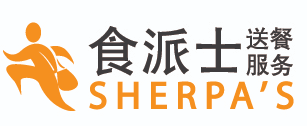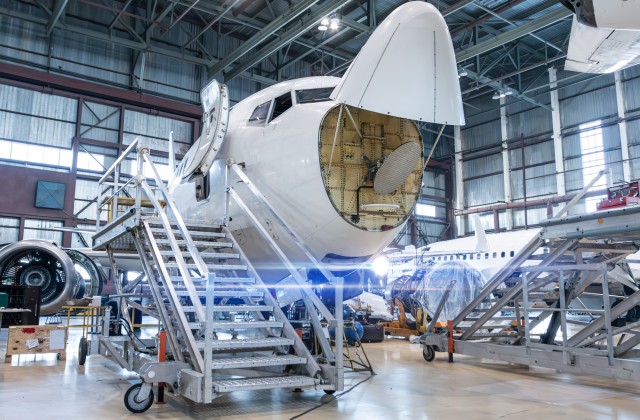Recently, Kinaxis announced the successful acquisition of Rubikloud, an emerging and disruptive provider of artificial intelligence and machine learning (AI/ML) solutions that automate supply chain prescriptive analytics and decision-making in the retail and consumer packaged goods (CPG) industries. Using AI/ML to generate better demand forecasts is one of the key solutions provided by Rubikloud. In this blog, I want to share some of my experiences in the food delivery service industry and explain how to leverage demand sensing capabilities to produce better demand forecasts and demand shaping strategies.
Lessons in demand forecasting from food delivery apps
 Many years ago I had the privilege to take the CEO role at Sherpa’s, a food delivery platform similar to Uber Eats and Grubhub, and transformed it from a family business into an enterprise with a fully institutionalized modern management system.
Many years ago I had the privilege to take the CEO role at Sherpa’s, a food delivery platform similar to Uber Eats and Grubhub, and transformed it from a family business into an enterprise with a fully institutionalized modern management system.
The word “sherpa” refers to the guardian angels in the Himalayas who cheerfully schlep vast loads up mountains while foreign clients pant a ways behind. Like Google and Wikipedia, sherpa is a noun that became a verb, as in "Can you sherpa a bag for me?" We borrowed this word, showing our commitment to providing high-level food delivery service to foreigners living in China.
 The tagline of Sherpa’s is “Your favorite restaurants delivered to you.” The next time you travel to China, please remember the orange running boy who is working hard to deliver your favorite food to you on time.
The tagline of Sherpa’s is “Your favorite restaurants delivered to you.” The next time you travel to China, please remember the orange running boy who is working hard to deliver your favorite food to you on time.
Part of the transformation at Sherpa’s was to rebuild the business’s operational systems, including the front-end food ordering website and app for consumers, the apps for couriers and restaurants, and the back-end customer service and order management systems. We took this rebuilding opportunity to define our analytical framework and to understand the data gaps for which we embedded data collection points into the new system.
Weighing the impacts of external and internal sources
The demand for food delivery service is highly impacted by the following internal and external factors.
External:
- The foreigner population in China and its annual growth rate
- Seasonality: lower demand in the summer due to the summer holiday and in the end of year time frame due to the Christmas season
- Weather: higher demand on rainy days and in the winter season
- Peak time of day: lunch and dinner time
Internal:
- RFM model (Recency, Frequency and Monetary): We used the RFM model to understand user value as well as to classify users into different segments/clusters with different buying behaviors.
- Other user behavior data: pages viewed, duration, search records, etc.
Some of the data above was historically available to collect. However, other data was not available in the legacy system but was important for us to be able to understand user behavior and missed opportunities.
Optimizing for peak demand
Sherpa’s had been facing supply shortages during dinnertime, especially between 6-7 pm. We received many claims on how difficult it was to log into our website during that peak time. The new system helped with that by using load-balance technology to ensure enough capacity to allow users to, at least, view the menu page.
In situations where there were too many visits to be accommodated by the back-end order management system, it was possible to temporarily downgrade the system by disabling ordering functions for users from certain areas where there was too much demand. The system recorded the number of visiting users and the number of users who successfully made an order. By doing this, we could understand the real demand so we could plan to add more computing resources when necessary.
We also developed demand shaping strategies to minimize missed opportunities. One of the strategies was to use dynamic pricing to shift some of the demand to off-peak periods. For example, we exempted delivery fees for orders put in before 5:30pm, but required a minimum order amount during peak times. Another strategy we took to reduce waiting times was to move restaurants whose food could be prepared quickly to the top of the website’s list.
Yet another strategy was to analyze search records. Our users could search restaurants with specific cuisines. For users who searched but did not put in an order, we thought there was an opportunity for us to add new cuisines into our portfolio. This became an important input into our restaurant menu development plan.
Adopting an agile approach to demand planning and sensing with AI/ML
As a startup, we had a limited budget and limited digital resources. Rather than implementing a sophisticated AI-enabled demand sensing platform, we took an agile approach by assuring the synchronized development of capabilities among people, processes and technology. The first thing we did was develop the culture and mindset for data-driven decision-making processes. We started this by training the management team on the concept of lean improvement. Then each team leader came up with an improvement plan on what could be improved in his/her team by applying lean concepts. After that, the management team worked together to develop the analytic framework to understand the key value drivers and metrics for our business from top line, bottom line and risk perspectives.
With the help of IT, we exported data and used Excel to analyze key metrics weekly. After a period of time, we introduced a commercial business intelligence tool to automate the data export and report generation tasks, allowing us to view the report daily. In those days, easy to use AI/ML tools were not generally available. However, now it is much easier to use AI/ML tools, such as Rubikloud, to further automate the process and improve the effectiveness of demand sensing and shaping strategies and tactics.
Besides demand sensing and shaping, there were other use cases for the application of AI/ML in our business. For example, we could use AI/ML to shorten the couriers' waiting time at restaurants. Different cuisines at different restaurants during different times of the day require different lead times to prepare. If we could estimate the waiting time more accurately, we could reduce the waiting time of couriers at restaurants, so that they could spend more time delivering food, especially during peak times. The more they could deliver, the higher the revenue.
At Sherpa’s, I used demand sensing and shaping approaches to improve service levels as well as grow revenue. In supply chain, using demand sensing can help you understand your customer better, so you can improve forecast accuracy and plan supply in advance. However, in cases of supply constraints, demand shaping is also a valid strategy to dynamically balance demand and supply in the near term. I hope this brings you some inspiration on how to apply these practices to your business.





